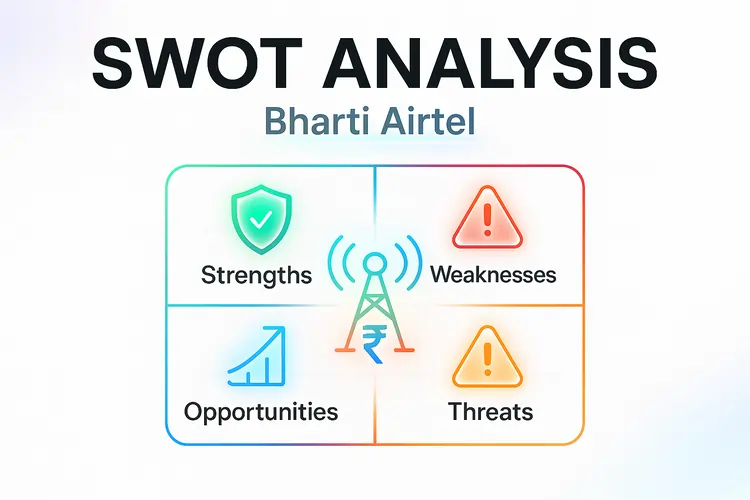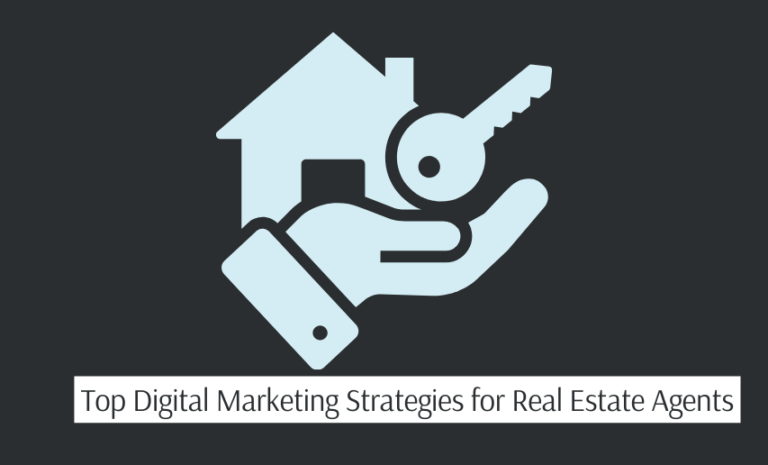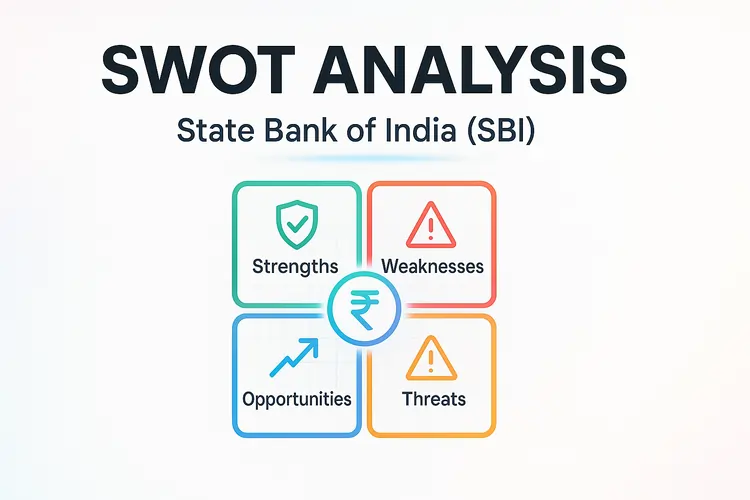
SBI SWOT analysis 2025 explores the strengths, weaknesses, opportunities, and threats of India’s largest public sector bank.
State Bank of India (SBI) serves over 50 crore customers with 22,500+ branches and 63,000+ ATMs across the country.
As of June 2025, SBI managed assets worth ₹61 lakh crore, with deposits of ₹27 lakh crore and advances of ₹26 lakh crore.
In Q1 FY26, SBI net profit stood at ₹19,160 crore, supported by steady loan growth and resilient asset quality.
SBI remains a leader in housing finance with an ₹8.31 trillion loan book and strong SME lending momentum.
Capital adequacy improved to 15.3%, with CET1 ratio at 11.8%, reflecting improved financial stability and buffers for growth.
As Deepak Singh, Founder of The DM School, I present this State Bank of India SWOT analysis to simplify its growth story and challenges.
For sectoral contrast, you may also check our HDFC Bank SWOT analysis, comparing a private sector giant with India’s biggest public bank.
Strengths of State Bank of India
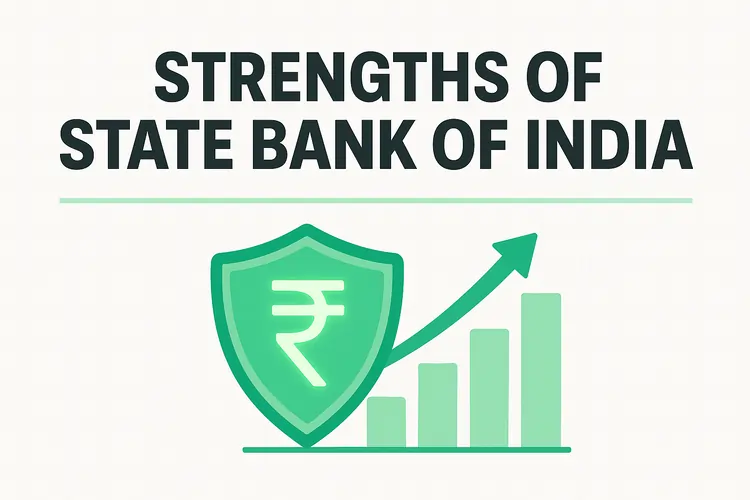
The strengths of SBI explain why it remains India’s largest bank and a key driver of financial inclusion.
With unmatched reach and customer base, SBI dominates deposits, lending, and housing finance across the country.
- Unmatched customer base: Over 50 crore customers make SBI India’s most trusted financial institution.
- Widest distribution: 22,500+ branches, 63,000+ ATMs, and 82,900 BC outlets cover even remote regions.
- Strong balance sheet: Assets worth ₹61 lakh crore, deposits of ₹27 lakh crore, and advances of ₹26 lakh crore.
- Profitability scale: Q1 FY26 net profit ₹19,160 crore despite NIM pressure, showing resilience of its core business.
- Housing finance leadership: ₹8.31 trillion housing loan book, making SBI India’s biggest mortgage lender.
- SME growth engine: SME portfolio at ₹5.06 trillion with nearly 17% YoY growth and specialized SME branches.
- Subsidiary ecosystem: SBI Life, SBI Cards, SBI Mutual Fund, and SBI General add strong non-interest income streams.
- Capital improvement: CET1 ratio of 11.8% and CRAR of 15.3% improve buffers for sustainable expansion.
🔥 Pro Tip: SBI’s biggest strength is its scale. With 50 crore customers, even a small cross-sell per user creates massive revenue impact.
These SBI strengths highlight how scale drives dominance, similar to insights from our YouTube Ads agency analysis.
Summary: SBI strengths include massive reach, largest customer base, housing finance leadership, SME growth, strong subsidiaries, and improving capital strength.
Weaknesses of State Bank of India
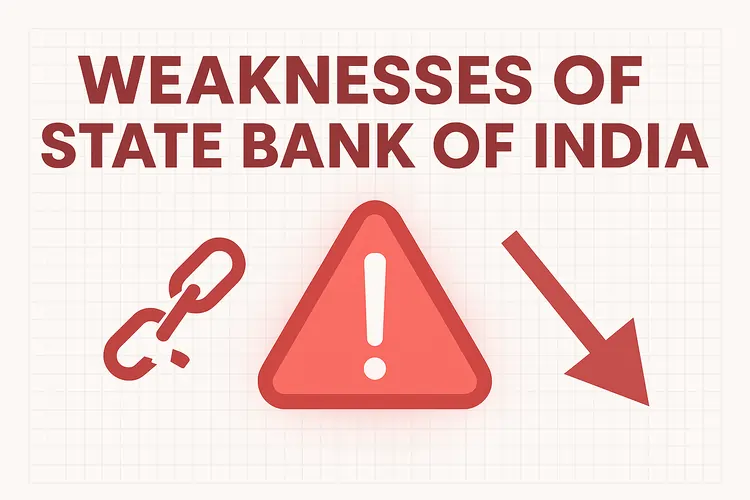
The weaknesses of SBI highlight structural challenges that limit profitability compared to nimble private sector banks.
Despite its leadership position, SBI struggles with efficiency, margins, and governance speed due to its public sector nature.
- Low net interest margin: NIM at 2.90% in Q1 FY26 is lower than top private banks like HDFC and ICICI.
- CASA pressure: CASA ratio at ~40% is weaker than private peers, raising sensitivity to funding costs.
- Operational complexity: 22,500+ branches create service consistency issues and higher operating costs.
- Public sector constraints: Government ownership often slows decision-making and limits strategic agility.
- Technology adoption gaps: SBI invests in digital banking but lags fintechs and new-age private banks in agility.
📊 CASA & NIM Comparison (Q1 FY26)
- SBI: CASA ~40% | NIM 2.90%
- HDFC Bank: CASA 34% | NIM 3.35%
- ICICI Bank: CASA 43% | NIM ~4.5%
- Kotak Bank: CASA 48% | NIM ~5.3%
SBI’s margins and CASA mix lag significantly behind private peers, limiting profitability.
These SBI weaknesses mirror the struggles of traditional giants, much like challenges faced in Facebook Ads campaigns in India when competing against agile new entrants.
Summary: Weaknesses include low NIM, CASA pressure, high operating costs, governance limits, and slower tech adoption.
Opportunities for State Bank of India
The opportunities of SBI reflect India’s rapid economic growth, digital adoption, and demand for inclusive financial services.
SBI can leverage its scale, subsidiaries, and technology to unlock new growth across retail, SME, and digital banking.
These opportunities can strengthen its leadership in both public and private sector banking spaces.
- Digital transformation: With 50 crore+ customers, SBI’s YONO app and UPI integration can drive financial inclusion at scale.
- SME and business lending: SME portfolio of ₹5.06 trillion is growing at 17% YoY, with strong expansion potential.
- Housing finance growth: ₹8.31 trillion home loan book gives SBI unmatched advantage in India’s rising housing demand.
- Subsidiary synergies: SBI Life, SBI Cards, and SBI Mutual Fund offer cross-selling opportunities to deepen customer wallet share.
- Rural penetration: 82,900 BC outlets and rural branches help tap India’s next wave of banking customers.
🌟 SBI Growth Drivers
- 📱 Digital banking: YONO app, UPI leadership, and AI-driven services.
- 🏠 Housing finance: ₹8.31 trillion loan book with steady demand growth.
- 🏢 SME lending: Fast-growing SME and business banking portfolio.
- 🌍 Rural outreach: BC outlets expand inclusion and financial access.
These SBI opportunities highlight how scale and innovation create growth, just as we see with digital-first platforms in India.
Summary: Opportunities include digital banking, SME lending, housing finance expansion, subsidiary synergies, and rural financial inclusion.
Threats to State Bank of India
The threats of SBI highlight the risks that challenge its profitability and long-term stability.
Even with massive scale, SBI is exposed to economic cycles, competition, and regulatory interventions.
These threats underline why India’s largest bank must balance growth with strict risk management.
- NIM pressure: Net interest margin at 2.90% lags private peers, making SBI sensitive to funding cost changes.
- Deposit competition: Private banks and fintechs attract younger customers with higher returns and digital-first offerings.
- Credit cost risk: Large retail and SME loan books could face higher defaults if the economy slows.
- Global volatility: Oil prices, inflation, and currency swings impact SBI’s balance sheet and capital requirements.
- Regulatory scrutiny: As a systemically important bank, SBI faces tighter oversight and compliance demands.
- Public sector constraints: Wage structures and slower decision-making reduce competitiveness against agile private banks.
- Subsidiary exposure: SBI Life, SBI Cards, and SBI MF remain sensitive to market volatility and investor confidence.
🔥 Pro Tip: For SBI, managing regulatory compliance and credit costs is more important than chasing rapid growth. Stability is its competitive edge.
These SBI threats mirror the challenges in fast-moving industries, much like those discussed in our guide on Facebook growth in India.
Summary: Threats include NIM pressure, deposit competition, credit cost risks, global volatility, regulatory scrutiny, and public sector constraints.
SBI Key Metrics Snapshot 2025
| Metric | Value | Period |
|---|---|---|
| Customers served | 50 crore+ | FY25 |
| Total branches | 22,500+ | FY25 |
| ATMs & ADWMs | 63,580+ | FY25 |
| BC outlets | 82,900+ | FY25 |
| Total assets | ₹61 lakh crore | Jun 2025 |
| Total deposits | ₹27 lakh crore | Jun 2025 |
| Total advances | ₹26 lakh crore | Jun 2025 |
| Net profit | ₹19,160 crore | Q1 FY26 |
| NIM | 2.90% | Q1 FY26 |
| CASA ratio | 40% | FY25 |
| Capital adequacy (CRAR) | 15.3% | Q1 FY26 |
| CET1 ratio | 11.8% | Q1 FY26 |
| Housing loan book | ₹8.31 trillion | FY25 |
| SME portfolio | ₹5.06 trillion | FY25 |
Profitability momentum
Moderate
Asset quality
Stable
Capital adequacy
Improved
Distribution reach
Massive
CASA momentum
Pressure
Conclusion of SBI SWOT Analysis 2025
The SBI SWOT analysis 2025 confirms why State Bank of India remains the backbone of India’s banking system.
Strengths like its unmatched reach, 50 crore+ customer base, housing loan leadership, and SME growth secure its dominant position.
Weaknesses such as low NIM, CASA pressure, and operational complexity show the structural challenges of being a public sector giant.
Opportunities in digital banking, SME lending, housing finance, and rural penetration provide SBI with new growth engines for the next decade.
Threats from competition, regulatory oversight, credit cost risks, and public sector governance remind us that scale alone cannot guarantee agility.
As Deepak Singh, Founder of The DM School, I view SBI as a case study in balancing inclusion with profitability. It shows how legacy banks can adapt in the digital era while serving national priorities.
For more on how scale and strategy drive leadership, check our Dmart SWOT analysis — a retail parallel to SBI’s financial dominance.
Summary: SBI’s size and trust make it India’s strongest bank, but sustained innovation and efficiency are key to future growth.
SBI SWOT – FAQs
What is SBI?
State Bank of India (SBI) is India’s largest public sector bank, serving 50 crore+ customers with branches, ATMs, and digital platforms nationwide.
What is the SBI SWOT analysis 2025?
The SBI SWOT analysis 2025 explains the bank’s strengths, weaknesses, opportunities, and threats based on deposits, profits, assets, and competition.
What are the strengths of SBI?
SBI strengths include unmatched reach, 22,500+ branches, 50 crore customers, strong subsidiaries, housing loan leadership, and growing SME lending.
What are the weaknesses of SBI?
SBI weaknesses include low NIM at 2.90%, CASA pressure, high operating costs, slower tech adoption, and governance limits due to public sector ownership.
What are the opportunities for SBI?
SBI opportunities include digital banking growth through YONO, rural penetration, SME lending expansion, cross-selling via subsidiaries, and housing loan demand.
What are the threats to SBI?
SBI threats include deposit competition from private banks, regulatory scrutiny, global volatility, credit cost risks, and slower decision-making processes.
How many customers does SBI have?
SBI serves more than 50 crore customers across retail, SME, agriculture, and corporate banking, making it India’s most trusted financial brand.
How many branches does SBI have?
SBI operates over 22,500 branches and 63,000+ ATMs across India, supported by 82,900+ business correspondent outlets for rural banking.
What is the total asset size of SBI?
SBI reported assets worth ₹61 lakh crore as of June 2025, making it the largest bank in India by total assets.
What is the deposit base of SBI?
SBI deposits stood at ₹27 lakh crore in June 2025, supported by a CASA ratio of about 40%.
What is the loan book of SBI?
SBI’s total advances reached ₹26 lakh crore in June 2025, with housing loans contributing ₹8.31 trillion and SMEs ₹5.06 trillion.
What is the net profit of SBI?
In Q1 FY26, SBI net profit was ₹19,160 crore, reflecting steady growth despite margin pressures.
What is SBI’s NIM?
SBI net interest margin (NIM) stood at 2.90% in Q1 FY26, lower than private banks like ICICI and HDFC.
What is SBI’s NPA ratio?
SBI reported gross NPA of ~3% and net NPA under 1% in FY25, with strong provision coverage ratios.
What is SBI’s CASA ratio?
SBI CASA ratio was ~40% in FY25, below private peers like ICICI and Kotak, creating pressure on funding costs.
What is SBI’s capital adequacy ratio?
SBI capital adequacy ratio (CRAR) improved to 15.3% in Q1 FY26, with CET1 at 11.8%, strengthening financial stability.
What is SBI’s role in housing finance?
SBI is India’s largest mortgage lender with an ₹8.31 trillion housing loan book, disbursing ₹2.28 trillion in FY25 alone.
What is SBI’s SME portfolio?
SBI SME portfolio reached ₹5.06 trillion in FY25, growing 16.9% YoY, supported by 868 SME-focused branches.
What are SBI’s digital banking initiatives?
SBI’s YONO app, UPI integration, and AI-driven services make it a leader in digital banking and financial inclusion.
What are the key subsidiaries of SBI?
SBI owns SBI Life, SBI Cards, SBI Mutual Fund, and SBI General Insurance, which diversify revenue and strengthen customer offerings.
Does SBI pay dividends?
Yes. SBI regularly pays dividends, balancing shareholder returns with capital retention for growth and regulatory compliance.
What is the future outlook for SBI?
The SBI outlook remains positive, driven by digital growth, SME expansion, housing demand, and subsidiary synergies, despite margin pressures.
